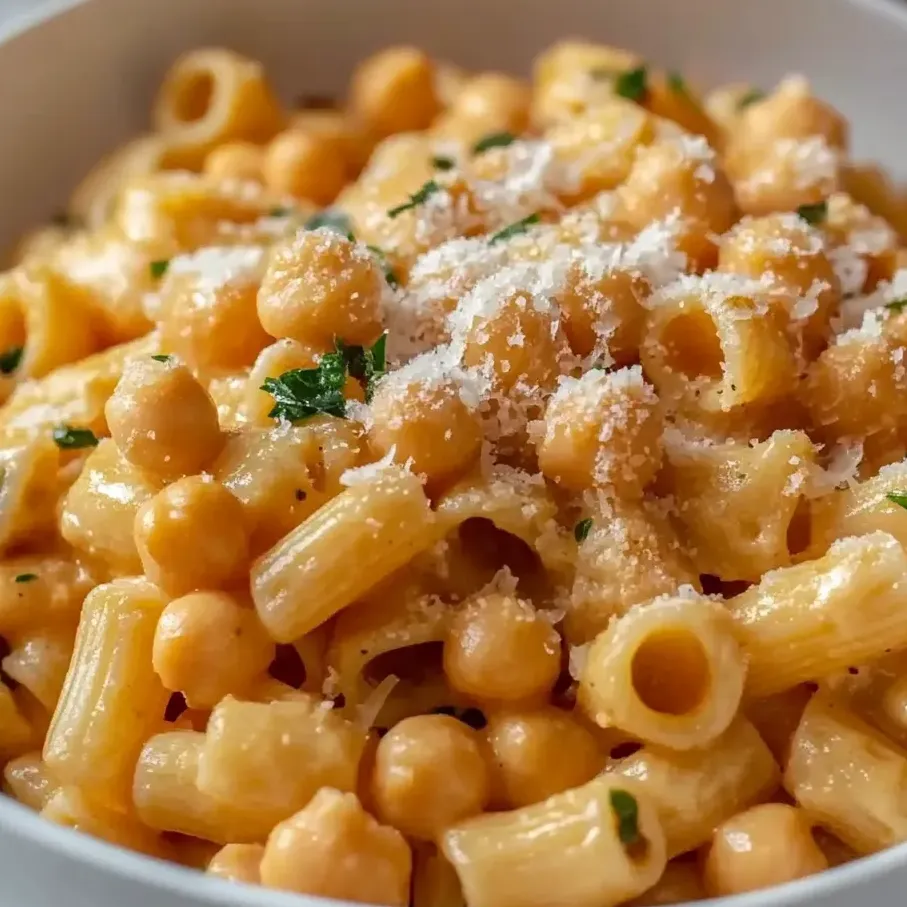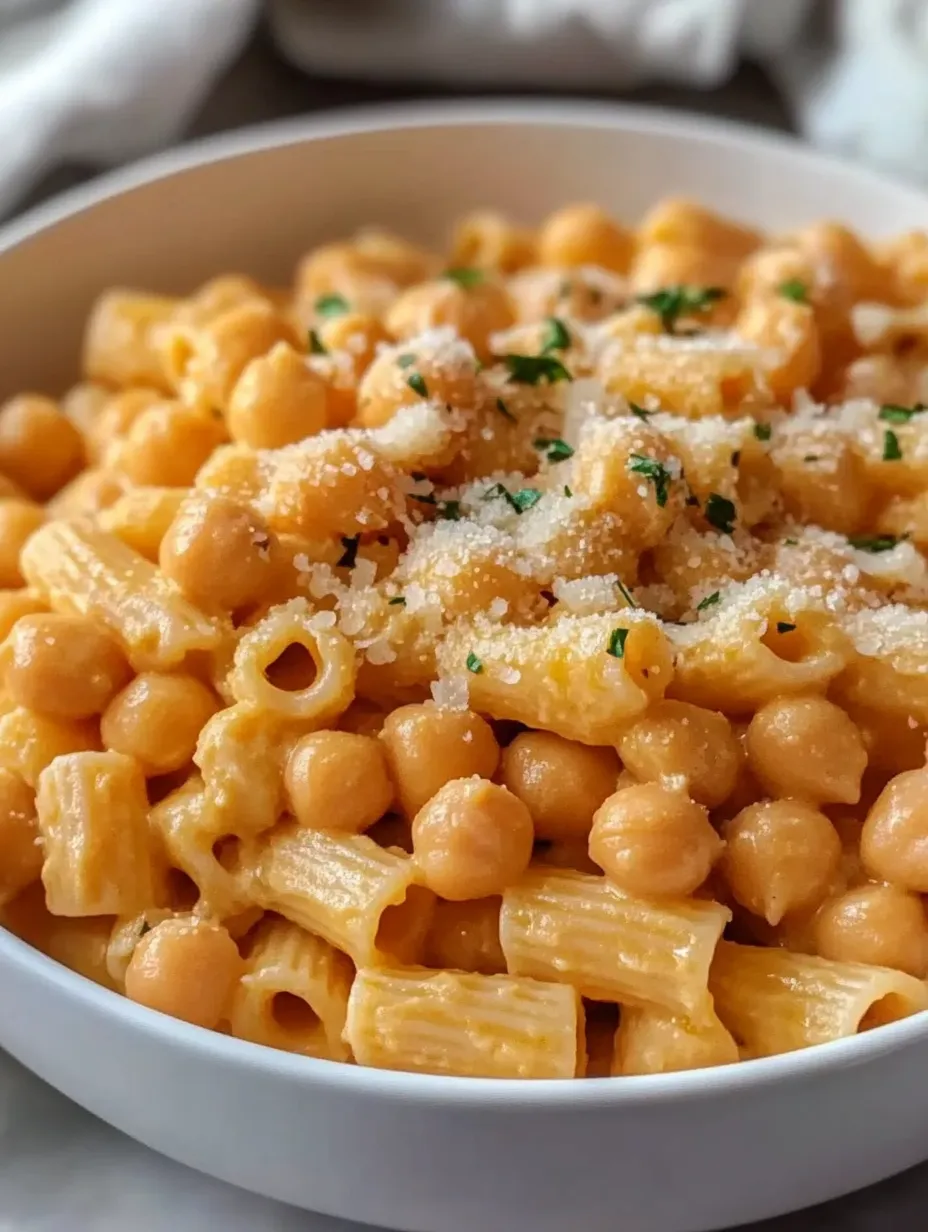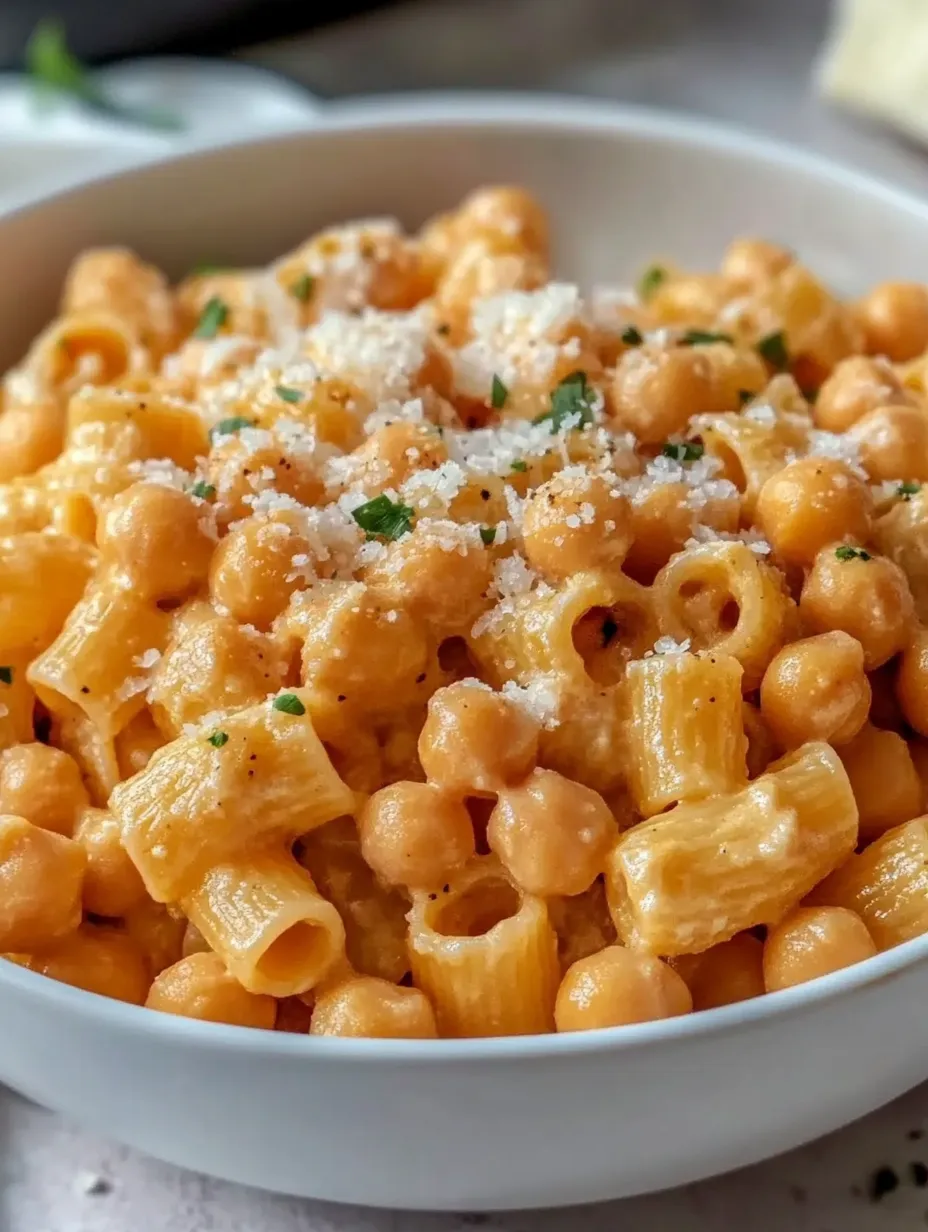 Save
Save
This humble mix of pasta and chickpeas creates an Italian comfort dish that's been loved for generations. The mix of soft pasta and velvety chickpeas in a tasty broth feels just like getting a warm hug from your bowl.
I whipped this up for the first time during a tough week when I needed something quick but comforting. I love how the starchy water from the pasta mixes with the smashed chickpeas to make it creamy without adding any actual cream. It's now what I cook whenever I want something filling without much work.
Ingredients
- Chickpeas: Give you filling protein and make things creamy when partly mashed
- Ditalini pasta: The classic choice, but any small pasta will do the trick
- White onion: Creates a sweet flavor base
- Garlic cloves: Add that must-have deep flavor
- Fresh rosemary: Gives that woodsy smell that makes this dish special
- Tomato paste: Adds a rich taste and nice color
- Chili flakes: Add mild warmth instead of burning heat
- Dry white wine: Cleans the pan bottom and adds a light tang
- Vegetable stock: Makes the smooth, tasty sauce
- Pecorino cheese: Adds salty richness and creaminess
Step-by-Step Instructions
- Sofrito Base:
- Warm olive oil in a pan over medium heat until it glistens but doesn't smoke. Cook the chopped onion for 5-6 minutes until see-through but not brown. This makes the tasty foundation for everything else. Toss in the sliced garlic and cook for just 1-2 minutes more until you can smell it. Watch it closely since garlic burns fast and gets bitter.
- Building Flavor:
- Toss in the chopped rosemary and chili flakes, stirring non-stop for about a minute. The heat will bring out the oils in the rosemary and wake up those chili flakes. Then mix in the tomato paste and cook for around 2 minutes, stirring often. This makes the tomato paste sweeter and much more flavorful.
- Creating The Base:
- Splash in the white wine or vinegar to clean off any tasty bits stuck to the pan bottom. Let it bubble down for 2 minutes to cook off the alcohol but keep the flavor. Add your chickpeas and veggie stock, letting everything bubble gently. Smash about a quarter of the chickpeas against the side of the pan with your spoon. This lets out starch that naturally thickens your sauce.
- One Pot Magic:
- Drop the dry pasta straight into the bubbling liquid. Stir often so it doesn't stick, and cook until it's just tender, about 6-7 minutes. As the pasta cooks, it soaks up the tasty broth and lets out more starch, making a smooth sauce. If things get too thick, just add a splash more stock or water.
- Finishing Touch:
- Take the pan off the heat and right away mix in the grated Pecorino. The leftover heat will melt it into the sauce making it creamy without getting stringy. Taste it and add salt if needed.
- Serving:
- Pour the dish into warm bowls. It should be thicker than soup but not as dry as regular pasta. Top it with lots of black pepper, extra Pecorino, and a drizzle of your best olive oil. Add more chili flakes or fresh parsley if you want.

The real trick to this dish is smashing some chickpeas to create that naturally creamy texture without needing any dairy. I picked up this tip from an old Italian lady next door who always said this was what made pasta e ceci go from good to amazing. She'd always remind me that the pasta should be swimming but not drowning in sauce, and those crushed chickpeas were how you get that perfect thickness.
Customization Ideas
You can easily change this pasta e ceci with whatever you've got in your kitchen. Try throwing in chopped carrots and celery with the onions for more flavor depth. You can mix in some kale or spinach during the last few minutes of cooking to add color and nutrients. If you eat meat, cook some bacon or pancetta with the onions for a smoky taste.
Make Ahead And Storage
This dish actually tastes better the next day as all the flavors get to know each other. You can make the whole thing up to two days early and warm it up slowly on the stove with a bit of water or stock to thin it out. The pasta will keep drinking up liquid while it sits, so you might need to add more when you reheat it. Leftovers stay good in a sealed container in the fridge for up to five days, making it perfect for weekly meal prep.
Historical Context
Pasta e ceci comes from the clever cooking style called cucina povera or 'poor cooking' that's big in Italian food traditions. Going back hundreds of years, this dish shows how Italian home cooks turned cheap pantry stuff into something really special. You'll find different versions across Italy – some more soup-like, others thick like stew. In Rome, folks traditionally eat pasta e ceci on Fridays as part of Catholic practice to skip meat that day.

Frequently Asked Cooking Questions
- → Can I swap in other pasta shapes?
Absolutely! Though ditalini works best traditionally, feel free to try small shells, orzo, or even broken bits of spaghetti. Just watch your cooking time based on whatever pasta you pick.
- → How do I make this without meat products?
Good news - it's already meat-free if you use veggie stock. To make it totally plant-based, just skip the Pecorino or swap it for a dairy-free cheese option. Nutritional yeast works great too for that savory kick.
- → What's the trick to warming up the leftovers?
Warm it gently in a pot with a splash of water or stock to loosen things up. Give it a stir now and then until it's hot throughout. The pasta soaks up liquid overnight, so adding a bit more brings back its saucy goodness.
- → Should I use chickpeas from a can or dry ones?
The quick version calls for a 400g can of drained chickpeas. If you've got time and dry chickpeas, soak them overnight and cook them until soft before starting the recipe. You'll want about 1½ cups of cooked beans.
- → What can I use instead of wine?
Don't want to use white wine? No problem. Just add extra veggie stock with a squeeze of fresh lemon for that tangy flavor. You can also try watered-down apple cider vinegar if that's what you have on hand.
- → How can I change how thick the dish turns out?
Want it thicker? Smash more chickpeas against the side of your pot. Need it runnier? Just pour in more veggie stock. Remember it'll thicken up naturally as it sits and the pasta drinks up the liquid.
